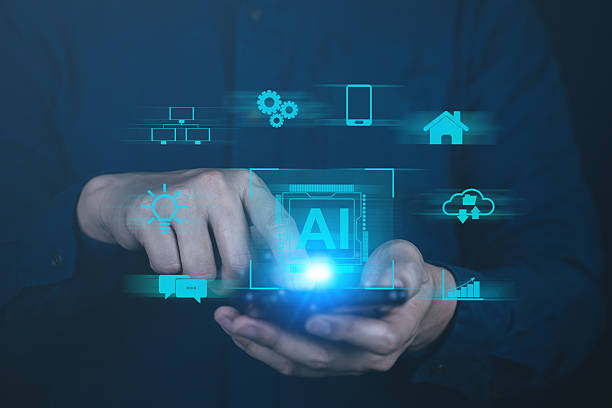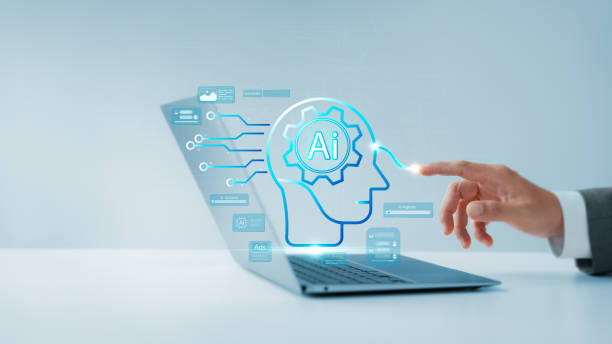What is an AI Robot and How Does it Work?
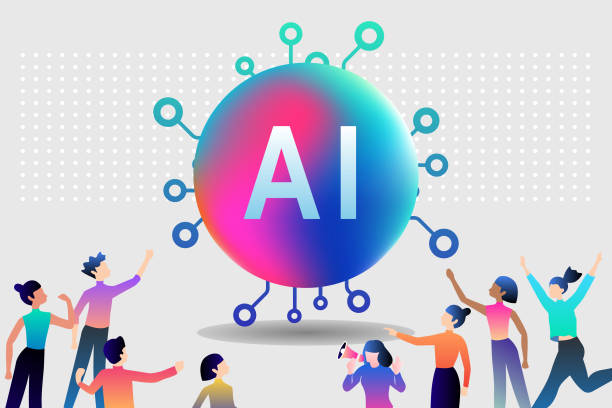
In today’s world, the name #AI_Robot is heard frequently and has affected many industries and aspects of our lives.
But what exactly does this term mean? An AI robot refers to a physical system capable of interacting with its environment, collecting information through sensors, analyzing it, and based on the analyzed data, making decisions and performing actions.
This advanced robotics, unlike traditional robots that only perform pre-programmed tasks, can gain experience and improve its performance through machine learning and artificial intelligence. The core of a smart robot is complex algorithms that enable it to recognize patterns, make predictions, and even reprogram itself automatically.
These capabilities allow AI robots to perform complex tasks in dynamic environments that were previously only possible by humans.
Their operational mechanism involves collecting data from cameras, microphones, and tactile sensors, then sending this data to a central processing unit for analysis by AI models, and finally, issuing appropriate commands to actuators (such as robotic arms or wheels).
This continuous process of learning and adaptation has transformed the smart robot into a powerful tool for solving complex problems.
Does your company website create a professional and lasting first impression in the minds of potential customers? Rasaweb, with its professional corporate website design, not only represents your brand’s credibility but also opens a path for your business growth.
✅ Create a powerful and trustworthy brand image
✅ Attract target customers and increase sales
⚡ Get free consultation
History and Evolution of Intelligent Robotics
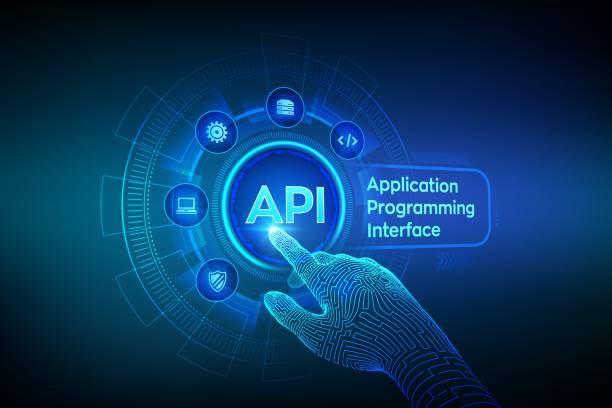
The roots of the robot concept go back to ancient stories and legends in which artificial beings with human capabilities were were depicted.
However, the birth of modern robotics and the initial ideas of AI robots relate to the 20th century with significant advancements in electronics and computer science.
In the 1950s and 1960s, with the advent of the first digital computers, researchers began to explore the possibility of building machines that could think and learn.
Unimate, the world’s first industrial robot, was introduced in 1961 and was a turning point in industrial automation, although this robot only performed repetitive tasks and lacked intelligence.
The 1980s saw the development of more advanced algorithms in the field of machine vision and natural language processing, paving the way for more capable robots.
In recent decades, with massive advancements in processing power, data storage, and deep learning algorithms, a new generation of AI robots has emerged that are capable of more complex environmental understanding, human interaction, and even learning through experience.
This gradual evolution, from simple mechanical machines to self-learning and autonomous robots, demonstrates the boundless potential of this technology to change our world.
The transformation from fixed and programmed robots towards mobile and interactive smart robots indicates the future direction of this field.
Today’s Applications of AI Robots in Various Industries
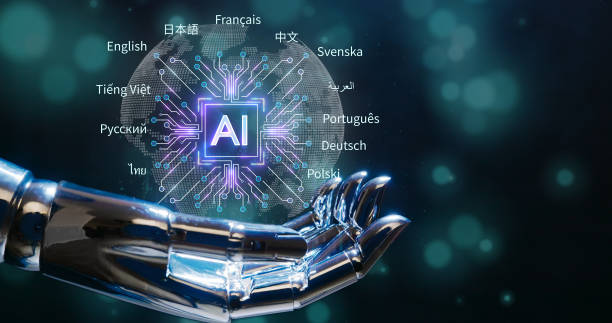
AI robots are no longer confined to science fiction; this technology is now at the heart of developments in many industries, showcasing diverse and impactful applications.
In the manufacturing industry, smart robots with capabilities like machine vision and reinforcement learning not only perform repetitive and dangerous tasks with high precision and speed but are also capable of adapting to production line changes and optimizing processes.
In the medical field, surgical robots with unparalleled precision have enabled complex and minimally invasive procedures, while service robots in hospitals help transport medicines and equipment.
The customer service and support sector has also witnessed a massive transformation due to AI chatbots and virtual assistants that can answer questions and resolve issues 24/7.
In agriculture, AI-equipped robots can precisely monitor fields, detect plant diseases, and perform accurate spraying and harvesting operations, leading to increased productivity and reduced resource consumption.
Also in logistics and warehousing, autonomous robots effectively move and organize goods with minimal human error.
This list of applications is constantly expanding, demonstrating how AI robots act as a driving force for innovation and efficiency worldwide.
The ability of these robots to perform complex tasks, analyze vast amounts of data, and learn from experience has transformed them into vital tools for progress in the modern world.
Table 1: Selected Applications of AI Robots in Industries
| Industry | AI Robot Application | Example or Task |
|---|---|---|
| Manufacturing and Industry | Assembly, Quality Inspection, Welding, Internal Logistics | Collaborative Robots (Cobots) in Assembly Lines, Inspection Robots with Machine Vision |
| Medicine and Healthcare | Precision Surgery, Rehabilitation, Nursing Assistance, Drug Delivery | Da Vinci Surgical System, Physiotherapy Robots |
| Agriculture | Crop Monitoring, Automated Harvesting, Precision Spraying | Strawberry Harvesting Robots, Smart Agricultural Drones |
| Logistics and Warehousing | Goods Movement, Sorting, Inventory Management | Autonomous Robots (AGV/AMR) in Amazon Distribution Centers |
| Services and Education | Customer Support, Personal Assistants, Interactive Teaching | Smart Chatbots, Educational Robots for Children |
Challenges and Ethical Considerations in AI Robot Development
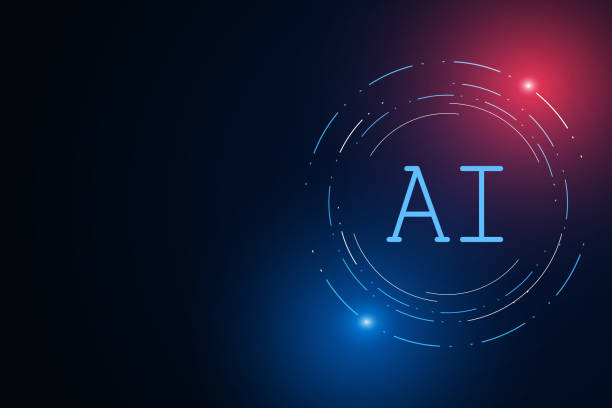
Although AI robots have immense potential to improve human life, their development and deployment come with significant challenges and ethical considerations that require serious attention.
One of the main concerns is the impact of these robots on employment.
With increased automation, there is a concern that robots will replace human labor in repetitive and even more complex jobs, which could lead to widespread unemployment and social inequality.
The question is how to manage the transition to a robot-based economy so that all members of society benefit from it?
Another issue is the ethical and legal accountability of robots.
If an AI robot makes a mistake that leads to harm, who will be responsible? The manufacturer, the programmer, or the operator? Defining the boundaries of responsibility in systems that make autonomous decisions has many complexities.
Privacy and data security are also important considerations; robots that continuously collect data must adhere to strong security protocols to protect personal information.
Also, the discussion of AI bias is raised.
If the data used to train an AI robot contains human biases, the robot will also reflect these biases, which can lead to discrimination or unfair outcomes.
Developers and policymakers must actively strive to design AI systems that are transparent, fair, and explainable.
Finally, a deeper question arises regarding the future coexistence of humans and intelligent robots; how can we ensure that these technologies serve human values rather than endangering them, and create a desirable future for humanity? Addressing these challenges requires international cooperation, public dialogue, and comprehensive legal and ethical frameworks.
Losing potential customers due to an unprofessional website? Rasaweb is your answer! With our specialized corporate website design services:
✅ Enhance your business’s credibility and standing
✅ Experience attracting more targeted customers
⚡ Act now to receive a free consultation!
Training and Machine Learning in Smart Robots
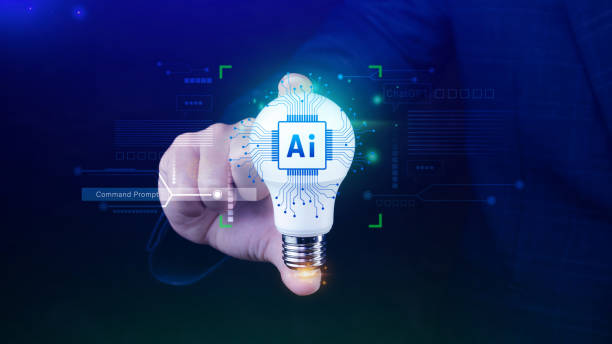
The beating heart of every AI robot is its ability to learn and adapt to its environment.
This capability is made possible through various subfields of machine learning.
In supervised learning, robots are trained with labeled datasets that include correct inputs and outputs.
For example, a robot can learn to recognize a specific object by observing thousands of images of various objects and their names.
This method is highly effective for tasks such as machine vision and speech recognition.
On the other hand, reinforcement learning allows the robot to interact with an environment through trial and error and learn from the feedback (rewards or penalties) it receives.
This method is highly suitable for training robots to perform complex tasks in dynamic environments, such as autonomous navigation or strategic games.
By repeating this process, the AI robot discovers optimal strategies to achieve its goals.
Additionally, unsupervised learning allows robots to find hidden patterns and structures in unlabeled data, which is useful for clustering and dimensionality reduction.
Advancements in deep neural networks have also granted new capabilities to smart robots.
These networks can process vast amounts of data and learn hierarchical representations of features, leading to significant improvements in robot performance in tasks such as face recognition, language translation, and text comprehension.
The ability of an AI robot to continuously learn and improve its performance without explicit human programming has made it an unparalleled tool for tackling real-world challenges.
This learning process enables the robot to exhibit appropriate reactions even when facing unforeseen circumstances.
AI Robot and Social Changes

The emergence and expansion of AI robots have had and will continue to have profound impacts not only on industries and the economy but also on social structures and dynamics.
One of the most tangible changes is in the realm of work and employment.
As mentioned in the challenges section, smart robots can take over many repetitive, dangerous, or even highly skilled tasks.
This can lead to job displacement in some sectors, but simultaneously, it creates new job opportunities in the design, maintenance, and development of AI systems.
The shift from manual jobs to cognitive and creative jobs will necessitate retraining and upskilling the workforce.
At a societal level, AI robots can improve the quality of life in many aspects.
Domestic robots can assist the elderly or disabled, service robots can simplify daily tasks, and educational robots can personalize the learning process.
However, the widespread use of these robots raises questions about social and human interactions.
Can excessive reliance on robots lead to a decrease in social skills or feelings of loneliness? How can a balance between technology use and the preservation of human values be ensured?
Another issue is the digital divide and unequal access to smart technologies.
Communities and individuals with less access to AI robots may fall behind in economic and social competition.
Planning for the fair distribution of the benefits of this technology and ensuring universal access to necessary education and infrastructure is crucial.
Ultimately, AI robots are not just technological tools, but transformative forces that directly impact human relationships, social structures, and the future of humanity.
Intelligent management of these changes requires a comprehensive and multifaceted perspective that considers both their positive potentials and challenges.
Losing potential customers due to an unprofessional website? Rasaweb is your answer! With our specialized corporate website design services:
✅ Enhance your business’s credibility and standing
✅ Experience attracting more targeted customers
⚡ Act now to receive a free consultation!
A Deeper Look at Advanced Technologies in Robotics
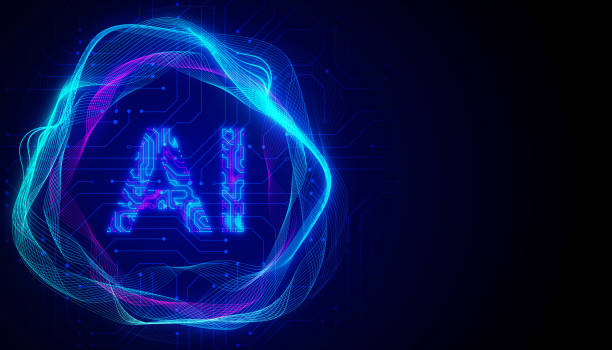
To fully understand the capabilities of an AI robot, it is necessary to delve into the technologies that make it possible.
Beyond machine learning, there are several other key areas that allow intelligent robots to operate autonomously.
Machine Vision, which enables robots to ‘see’ and understand their visual environment, works through cameras and complex image processing algorithms.
This technology is crucial for navigation, object recognition, and quality inspection in industrial robots.
Natural Language Processing (NLP) gives robots the ability to understand, interpret, and generate human language.
This technology plays a central role in conversational robots, virtual assistants, and service robots that verbally interact with humans.
Autonomous navigation and mapping systems, such as SLAM (Simultaneous Localization and Mapping), allow the intelligent robot to move in an unknown environment and simultaneously create a map of that environment.
This is crucial for delivery robots, exploration robots, and warehouse robots.
Furthermore, the development of advanced sensors (such as lidar, radar, and tactile sensors), which collect precise and diverse data from the environment, has significantly helped improve the robot’s understanding of the physical world.
The integration of these sensors with data fusion algorithms allows the AI robot to obtain a more comprehensive and accurate picture of reality.
Table 2: Key Technologies in AI Robots
| Technology | Description | Importance for AI Robot |
|---|---|---|
| Machine Learning (ML) | Algorithms that allow systems to learn from data and improve their performance. | Basis of robot self-learning and adaptability. |
| Computer Vision | The ability of computers to see, process, and understand images and videos. | Enables navigation, object recognition, visual inspection. |
| Natural Language Processing (NLP) | Interaction between computers and human language (speech and text). | Enables verbal communication, understanding voice commands. |
| SLAM (Localization & Mapping) | Technology for building a map of an environment while simultaneously localizing within it. | Autonomous and independent navigation in unknown environments. |
| Sensors and Actuators | Tools for collecting information from the environment and performing physical actions. | Input for AI and output for physical performance. |
It is this convergence between artificial intelligence and robotics that has granted AI robots unprecedented capabilities for performing complex tasks and intelligently interacting with their surroundings.
The Future of AI Robots and New Perspectives

The future of AI robots extends beyond our current imaginations and promises deeper transformations in human societies.
Intelligent robots are expected to become significantly more autonomous, flexible, and socially intelligent in the near future.
One important prospect is the development of collaborative robots (Cobots) that can work safely and effectively alongside humans, not merely as their replacements.
These robots can perform heavy or repetitive physical tasks, allowing humans to focus on more creative and strategic work.
In the medical field, advancements will include nanorobots for ultra-precise surgeries inside the body, nursing robots for patient care, and even companion robots to provide emotional and social support to individuals.
AI robots will also play an increasing role in space exploration and hazardous terrestrial environments, where risks for humans are too high.
With advanced self-learning and decision-making capabilities, these robots can operate autonomously on long-duration missions.
Another perspective is the emergence of Soft Robotics, which are made from flexible materials and can move and interact more safely in complex and sensitive environments.
This expands the applications of robotics into areas such as delicate surgeries or assisting people with disabilities.
Finally, advancements in Artificial General Intelligence (AGI), if realized, could lead to the creation of AI robots with human-level or even superhuman cognitive abilities, which would have profound philosophical and social implications.
This future, while full of potential, requires serious discussions and responsible designs to ensure its alignment with human goals.
Do you dream of a thriving online store but don’t know where to start?
Rasaweb is your comprehensive e-commerce website design solution.
✅ Attractive and user-friendly design
✅ Increase sales and revenue⚡ Get free consultation
Guide to Choosing and Using Smart Robots for Businesses
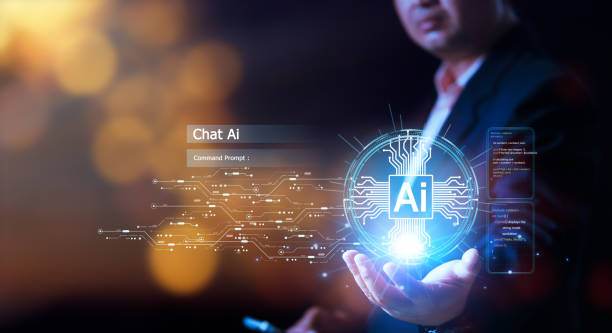
The use of AI robots in businesses is no longer an option but has become a necessity for maintaining competitiveness.
But how can one choose the right smart robot and effectively integrate it into business processes? The first step is to precisely identify business needs and goals.
Is the goal to increase productivity, reduce costs, improve product quality, or provide better customer service? A clear understanding of these objectives helps in selecting the type of robot and the required capabilities.
Next, evaluating existing technologies and platforms is important.
The market for smart robots is vast, ranging from industrial robots for mass production to service robots for customer interaction.
Examining features such as accuracy, speed, portability, ease of programming, and integration with existing systems, is essential.
Also, attention should be paid to the robot’s scalability and flexibility so that it can adapt to business growth and changing needs.
The next step is human resource training and change management.
Deploying an AI robot in the workplace requires training employees to collaborate with it and changing traditional work approaches.
Transparency about the benefits of robots and addressing employee concerns are highly important.
Safety and ethical considerations must also be prioritized.
Ensuring that robots operate in compliance with safety standards and ethical principles is crucial for long-term success.
Finally, ongoing support and maintenance of robots are also an essential part of the process to ensure their optimal performance and longevity.
With a step-by-step and comprehensive approach, businesses can leverage the full potential of smart robots for their transformation and growth.
The Impact of AI Robots on Daily Life
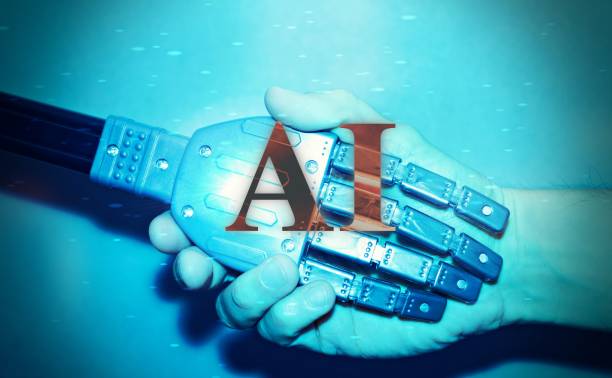
AI robots are slowly but steadily penetrating various aspects of our daily lives, bringing about changes that we sometimes don’t even notice.
In our homes, smart voice assistants like Google Assistant or Amazon Alexa, which are essentially conversational smart robots, allow us to perform various tasks with voice commands, from playing music to controlling smart home appliances.
Robotic vacuum cleaners are another example of this technology, independently cleaning the house and freeing up our time.
In the field of transportation, we are witnessing the development of self-driving cars that have the potential to fundamentally change how we move.
Although still in early stages, these AI robot-equipped vehicles promise safer and more efficient travel.
In public spaces, service robots in airports, shopping centers, and hotels help provide information, guide travelers, and transport luggage, creating a more efficient and often entertaining experience for us.
Even in how we consume media content, recommender robots used on platforms like Netflix or YouTube are a type of artificial intelligence that suggest relevant content based on our interests, personalizing the user experience.
The impact of AI robots on our daily lives shows that this technology has found its place not only in major industries but also in the smallest details of life.
These robots, by increasing convenience, efficiency, and access to information, are shaping a new lifestyle in which interaction with intelligent machines has become an inseparable part of our reality.
Frequently Asked Questions
| Row | Question | Answer |
|---|---|---|
| 1 | What is an AI robot? | An AI robot is a machine capable of understanding, reasoning, learning, and problem-solving, and can perform complex tasks with relative autonomy. |
| 2 | What are the most important applications of AI robots? | Main applications include industrial manufacturing, customer service (chatbots), medicine and surgery, autonomous transportation, space exploration, and military affairs. |
| 3 | What is the main difference between an AI robot and a regular robot? | A regular robot only follows programmed instructions, while an AI robot can learn from data, make decisions, and adapt to new environments. |
| 4 | How do AI robots learn? | They learn by identifying patterns and improving their performance through machine learning algorithms (such as deep learning, reinforcement learning) and processing vast amounts of data. |
| 5 | Can AI robots have emotions? | Currently, AI robots do not have real emotions in the human sense. They can mimic or detect emotions, but they do not understand or experience them. |
| 6 | What are the current limitations of AI robots? | Limitations include the need for large amounts of data, inability to understand abstract concepts, lack of true creativity, ethical issues, and challenges of generalization in new environments. |
| 7 | What is the role of AI in the development of humanoid robots? | AI helps humanoid robots to walk, maintain balance, understand their surroundings, interact with humans, and perform complex tasks. |
| 8 | How is the future of AI robots predicted? | It is predicted that AI robots will become smarter, more autonomous, and capable of performing more complex tasks in daily life and industry, and their interaction with humans will increase. |
| 9 | Can AI robots replace all human jobs? | It is unlikely that all human jobs will be replaced. Robots will take on many repetitive and dangerous tasks, but jobs requiring creativity, empathy, and ethical judgment will remain. |
| 10 | What ethical and social challenges arise with the expansion of AI robots? | Challenges include issues related to privacy, data security, ethical decision-making by robots, impact on employment, and accountability in case of errors. |
And other services of Rasaweb Advertising Agency in the field of advertising
Smart UI/UX: Designed for businesses seeking to increase website traffic through precise audience targeting.
Smart Link Building: An innovative service to enhance campaign management through marketing automation.
Smart Brand Identity: An innovative service to boost website traffic through custom programming.
Smart Customer Journey Map: Professional optimization for customer acquisition using key page optimization.
Smart UI/UX: A blend of creativity and technology for digital branding by utilizing real data.
And over hundreds of other services in the field of internet advertising, advertising consultation, and organizational solutions
Internet Advertising | Advertising Strategy | Advertorial
Resources
The Role of AI in Future Life
The Impact of Smart Robots on Industry and Society
The Bright Future of Robotics in Iran
Challenges and Opportunities of Artificial Intelligence
Are you looking for a big leap in your online business? ? Rasaweb Afarin Digital Marketing Agency offers smart solutions for your growth and visibility in the online space by providing specialized services including WordPress website design, SEO, and digital advertising. With us, your business’s digital future is brighter.
📍 Tehran, Mirdamad Street, Next to Central Bank, Southern Kazerun Alley, Ramin Alley No. 6

